If you are part of the “Valentine’s Day? Vade retro!” party, if you fear excessive doses of sugar, if you rather celebrate the patron saint of singles San Faustino on February 15th, this article is NOT for you!
Prepare a lot of handkerchiefs… the molasses overdose is lurking: you will shed bitter tears for all the most romantic and troubled love stories in Florence.
Here is the collection of the schmaltzy protagonists: the tormented Bianca and Francesco, the steady Dante and Beatrice, the unfortunate Giuliano de’ Medici and the beautiful Simonetta Vespucci, the writer Vittorio Alfieri and the countess Luisa Stolberg of Albany, the ghost bride and the windows always kept open, Andrea del Sarto and his dominating wife and, last but not least, the scandalous love affair between the nun Lucrezia Buti and the painter friar Filippo Lippi.
Definitely a Florentine Valentine’s Day!
Bianca and Francesco


This article begins – it couldn’t be otherwise! – with the most famous and poignant love story of Florence.
In fact, Valentine’s Day cannot fail to remind us of the romantic and unfortunate love story of Francesco I de’ Medici and Bianca Cappello.
Francesco, from Florence, is married to Giovanna, from Austria. Bianca, from Venice, is married to Piero, from Florence.
… Are you already confused? Come on, focus!
But Bianca’s family disapproves of the marriage with the Florentine with a fallen fortune … and, therefore, Bianca, who despite her candid name has a fiery temperament, runs away from Venice with her beloved.
Yeah … beloved … but how long does love last?
Bianca spends time at the window of her modest home in Piazza San Marco. What a mockery of fate! Even in Florence there is Piazza San Marco … only, there are no gondolas.
We are in 1563. One day, at the window, Bianca finally wakes up from her torpor, from the boredom of those who have fled, has lost everything, and certainly cannot walk and delight in the Florentine worldly strolls … Bianca, that day, sees Francesco . It’s love at first sight!⚡
Their relationship will last 24 years. In 1572, Bianca remains a widow: Piero Bonaventuri has died in a duel. Francesco, in a timely manner, welcomes Bianca as a lady of the court at Pitti Palace. He gives her a building in Via Maggio (the 16th century Champs-Elysées, so to speak), frescoed with graffiti by B. Poccetti and built by B. Buontalenti, a building that is connected with a secret passage to Pitti Palace…
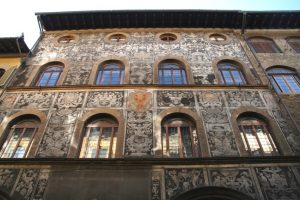
Francesco is so in love that he forgets that his wife is the Emperor’s sister …
Bianca, it is evident, does not enjoy too much popularity.
In 1578, Giovanna, pregnant, falls down the stairs and dies. Bianca will be the accused of this horrible tragedy.
Nevertheless, just a few days after the death of his wife, in great secret, Francesco remarried. The marriage was only made public in 1579.
Bianca and Francesco lived (almost) happily ever after until 1587. Moments of love alternate at the Villa di Pratolino and at Poggio a Caiano; Bianca patiently waits for Francesco, obsessed with alchemical studies; Bianca always patiently endures Francesco’s brother, Cardinal Ferdinando, who hates his new sister-in-law.
Bianca is unfortunately unable to have children: she will be forced to pass off as her own the son that Francesco had had from a maid, Don Antonio. It does not actually seem a romantic story, one of those with a happy ending, a worthy setting for Valentine’s Day. Rather. It’s a bit of a Shakespearean story, which ends even worse.
But it is precisely in the tragic love that humanity has always loved to bask: Romeo and Juliet, Paolo and Francesca, Tristan and Isolde. The list could be much longer …
In 1587, Bianca and Francesco invited Cardinal Ferdinando to Poggio a Caiano for a friendly hunt. The two realize, in reality, that it is necessary to guarantee the lineage of the house. Having no heirs, the closest relative is Ferdinando.
On October 19th, 1587, following the hunting trip, Francesco unexpectedly dies. 11 hours later, Bianca joins him. It has been written a great deal about the tragedy: that Ferdinand had poisoned for the throne, that Bianca had thought of poisoning Ferdinand but that she had inadvertently intoxicated Francesco and that to pay off his guilt she decides to commit suicide, who simply had a fever because of the alchemical games of Francesco, who had become intoxicated with his experiments ….
We will never know.
We only know that, like all romantic and tragic stories that are respected, the two lovers died together but lie apart: he, with his first wife, in the Medici chapels; she, whose remains have been lost, perhaps rests in a small church in Poggio a Caiano.
We don’t know … but true love goes beyond knowledge.
Bianca and Francesco whispered words of love in the Grotta Grande at Boboli Garden, in the iridescent shade of the colourful aquarium. Colourful fishes floated there, reflecting the colours of the sunset, while a slow light rain poured into the cavities of the cave, along the frescoed walls. Lovers, like Paris and Helen, wandering flirted in the silent solitude of the Buontalenti Grotto.

The statue of Abundance in the Boboli Gardens, sculpted by Giambologna and Pietro Tacca, is probably the portrait of Giovanna d’Austria, first wife of Grand Duke Francesco I de’ Medici. It should have been placed on a column in Piazza San Marco … right where Francesco had met Bianca Cappello … his future second wife! …
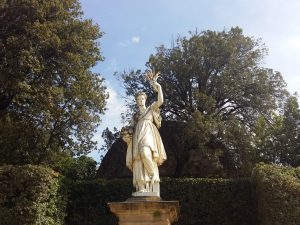
Dante and Beatrice


Dante Alighieri met Beatrice Portinari at the feast of Calendimaggio in 1274, as Boccaccio wrote.
Dante himself, however, in the Rhymes, provides us with a description of his beloved: she wore a blood red dress. It was love at first sight… but it should be remembered that Dante was born in 1265, therefore in 1274 he was only 9 years old !!!
The number 9 is prophetic and symbolic in Dante’s life and work and takes on obvious allegorical meaning. Beatrice was the daughter of Folco Portinari, the founder of the Spedale di Santa Maria Nova, inaugurated in 1286 (still existing and functioning today). He married Simone de’ Bardi, to whom she bore six daughters. She died at a young age, in 1290, plunging Dante into despair.
It seems incredible to say for two neighbors, but the opportunities to meet at the time were very scarce.
In Florence there was in fact a strict separation of the sexes, therefore, as soon as a child entered the stage of puberty, the family was careful not to lock her in the house and, as we would say today, “throw away the keys”.
Beatrice married at seventeen, therefore, as a wife, she was allowed to go out. It was on this occasion that Dante saw her again, before she died prematurely.
Everyone knows that Dante married Gemma Donati, who left her in Florence during his exile from 1302 to 1321, but perhaps few remember that Dante had 4 children by Gemma: Piero, Jacopo, Giovanni and Antonia.
The latter joined her father in exile in Ravenna, where she took vows at the monastery of Santo Stefano dell’Uliva. Who knows what they said in the family when they learned that she had taken vows with the name of Sister Beatrice.
Do not miss the Church of Santa Margherita de ‘Cerchi in Florence, more affectionately known as the Church of Dante and Beatrice. Here, the scene of their meetings (from afar!) took place. Beatrice is buried in the church, together with the nurse Monna Tessa.


Giuliano de’ Medici and Simonetta Vespucci (… and Sandro Botticelli, the third wheel)
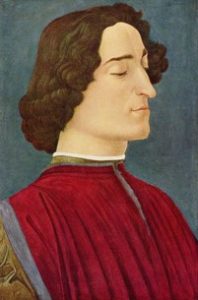

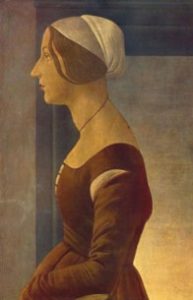
On April 26th, 1478, Giuliano de ‘Medici died in the Cathedral of Santa Maria del Fiore in Florence.
Francesco Pazzi and Bernardo Bandini Baroncelli stabbed him 19 times. Francesco was captured and sentenced to death the same day. Bernardo fled from Italy but shortly after he was found in Constantinople and dragged to Florence. He was still in the Turkish dress when they killed him.
Giuliano de’ Medici (1453 – 1478), younger brother of Lorenzo the Magnificent, was a bachelor: he should have married the noble Semiramide Appiani but his cousin of the cadet branch, Lorenzo di Pierfrancesco, took her. It is a bit unusual, actually, that, at the age of 25, Giuliano was not yet married … was probably the cardinal’s purple in sight for him?
Giuliano, however, had a great love: the famous Simonetta Vespucci, Sandro Botticelli’s muse, who died of pulmonary tubercolosis at the age of 23.
Simonetta Cattaneo was born in Genoa in 1453, the same year as Giuliano, and died in Florence in 1476, two years before him. When she was just sixteen she married Marco Vespucci, cousin of the famous Amerigo Vespucci, who had the merit of identifying a new continent in the Indies discovered by Christopher Columbus, to which he gave his name.
On January 29th, 1475, a tournament took place in Piazza Santa Croce. It was one of the funniest and most glamorous social events in Florence. The tournament was organized by Lorenzo the Magnificent, Giuliano’s older brother, to celebrate the peace agreement between the Italian states. The famous testimony of the scholar Agnolo Poliziano remains of the tournament in the poem “Rooms for the joust”, which was the starting point for the famous works by Sandro Botticelli, preserved in the Uffizi Galleries in Florence. The participants in the tournament were fighting for a highly coveted prize: it was, in fact, the portrait of the beautiful Simonetta.
Guess who won the tournament?
Luxuriously dressed and provided with a magnificent banner where the face of Pallas (Simonetta Vespucci) triumphed intertwined with olive branches (Giuliano’s device) with the motto “la sans par“, the peerless, Giuliano defeated his opponents and won the coveted portrait.
But alas Simonetta died soon, and Giuliano fell into a deep sadness. Nonetheless, he had time to have an illegitimate child with Fioretta Gorini: Giulio. He grew up with his cousins, the sons of Lorenzo the Magnificent. In 1523 he would become Pope Clement VII, the scandalous Pope of the Sack of Rome, the pope who crowned Charles V in Bologna and who arranged the marriage between Catherine de’ Medici and Henry II of France.
Where to go on a love pilgrimage to Florence in search of Giuliano and Simonetta? Giuliano de’ Medici is buried in the New Sacristy in the Medici Chapels, while Simonetta Vespucci is in the patronage church of her husband’s family, Ognissanti. With another one!
Yes, because Simonetta had so many admirers… including Sandro Botticelli himself, who asked, on the death of the muse who had inspired him for the Uffizi masterpieces, “to be buried at his feet”. And so, when he died in 1510, Sandro was satisfied: he rests, in fact, in the church of Ognissanti (not really at Simonetta’s feet, but certainly closer to her than Giuliano is!).
Vittorio Alfieri and the countess Luisa Stolberg of Albany
Among these shameless declarations of love worthy of Baci Perugina, which one would you choose between: “My only woman“, “The life of my life“, “The sweet half of myself” and “The person I have above everything else venerated and beloved“? These are the words of Vittorio Alfieri (1749 – 1803), lover of the countess Luisa Stolberg of Albany (1752 – 1824).
Wife of Charles Edward Stuart, Jacobite pretender to the throne of England, the countess moved to Florence in 1777, where she met the young writer. This is how Vittorio describes her: “A sweet fire in the very black eyes coupled (which rarely happens) to very white skin and blond hair gave her beauty a prominence, from which it was difficult not to be impressed or conquered“.
In 1788, the countess was left a widow. After a stay in France, when the revolution broke out, Vittorio and Luisa took refuge in Palazzo Gianfigliazzi in Florence. Here Luisa gathered a circle of intellectuals and artists, and weaved a sort of Neoplatonic menage-à-trois with the writer Alfieri and the French painter François-Xavier Fabre.
In 1803, Vittorio Alfieri died. The most beautiful tomb in the Basilica of Santa Croce was sculpted by Antonio Canova entrusted by countess Luisa Stolberg of Albany in 1810 and contains the remains of the playwright Vittorio Alfieri, author of the “Misogallo”, a famous anti-French treatise.
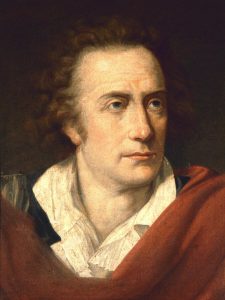

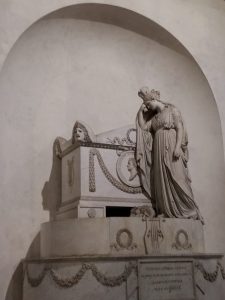
The ghost bride and the windows always kept open

Many, many years ago (in the sixteenth century), far far away, in a distant land (Florence), there lived a young girl who married a noble from Palazzo Grifoni. They lived in the palace of his family in Piazza Santissima Annunziata and were happy and in love. But their joy did not last long: the noble suddenly had to leave for the war. The beloved bride contemplated from the window the knight who was slowly walking away …
Days passed, and the faithful bride embroidered beside the window, always waiting for the return of her brave husband. Weeks passed, then months, then years… but the window was always open, and the bride waited.
She waited so long, poor girl, that she died. The distraught family prepared a funeral wake for the body of the deceased bride, who died of love and waiting. But someone dared to close the window … a ghostly fury took hold of the room: the wind swept away all the furnishings, the furniture moved, a hiss whistled terrible … so the family never dared to face the ghost bride again.
In fact, after centuries, the window of Palazzo Grifoni, today Budini-Gattai, is always open.
The groom may come back … and we believe in love.
The dominating wife of Andrea del Sarto


“He is also to complain of luck, when a good talent is born and that is of perfect judgment in painting and makes himself known in the excellent one, with works worthy of praise, then seeing him on the contrary lower himself in the ways of life not being able to temper the evil use of his customs with anyone”.
So wrote Giorgio Vasari about the master Andrea del Sarto (1486-1530) defined by him as a “painter without error”, a link between the Renaissance and Mannerism, but as talented in art as a klutz in love.
Vasari, in fact, reproaches him: “If he had expected a more civil and honored life and not neglected himself and his neighbors, for the appetite of one of his women who always kept him poor and low, he would have been continuously in France, where he was called by that king who adored his works and esteemed him highly (…)”.
In short, his wife Lucrezia di Baccio del Fede turned Andrea del Sarto inside-out. Married to a capmaker in Via San Gallo, flirtatious with everyone, Lucrezia was left a widow. Andrea didn’t miss the opportunity and grabbed Lucrezia, making her his wife: he was unaware that it is always women who choose the man who will choose them …
Lucrezia administered his finances – which she kept for herself, in spite of her children – and mistreated the shop assistants: nevertheless, she appeared in all the paintings and frescoes by Andrea del Sarto, in the form of allegory, hidden by a saint or a Florentine Madonna.
It was her fault, Vasari insists, that Andrea del Sarto, invited to court by Francis I, King of France, prematurely returned to Florence: he could not resist the ardent letters of Lucrezia, at home, waiting impatiently for him…
But the King of France was waiting for his painter, who promised him that he would come one day, taking his wife with him … alas, he never came. Lucrezia’s clutches did not loosen. And Andrea lived in Florence, with moderate success (not the same triumph he would have had in France!), until 1530, when he died of the plague. And Lucrezia?
Giorgio Vasari wrote: “Hence, he placed himself in bed and was very judged and his woman was frightened, believing that he was ill with the plague, she stayed away as much as she could. For which Andrea without being seen, miserably say that he died, that almost no one was greedy”.
The nun Lucrezia Buti and the painter friar Filippo Lippi
… But on Valentine’s Day the happy ending can only triumph.
Once upon a time there was a painter friar who became prior of a female convent. Among the nuns, it was impossible not to notice the sweet, enchanting and heavenly beauty of the nun Lucrezia Buti.
The painter friar fell in love with the attractive nun … two children were born. The scandal forced them to flee! … But, suddenly, Cosimo the Elder de’ Medici, a great friend of the painter friar, intervened and took care of redeeming his prestige in society.
The painter friar and his beautiful Lucrezia Buti lived happily ever after with their children … and one of them, Filippino Lippi, became a painter a few years later.
Happy Valentine’s Day by My Flora Guide

After this triumph of love, I just have to wish you a good Valentine’s Day in the company of those you love most. When you will emerge from your amorous torpor, please remember to impress your loved one by booking a lovely guided tour.
If you need more information, please write to Cupid … no, sorry, always write to: info@myfloraguide.com
… Sometimes, it works! 😉




